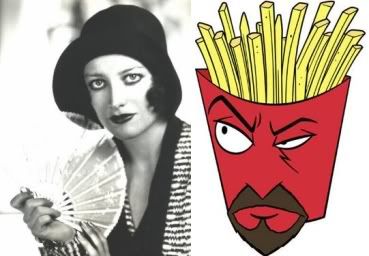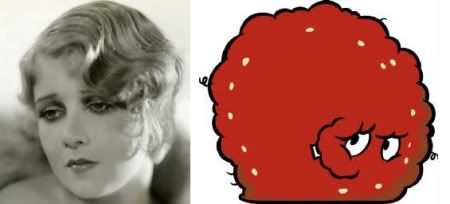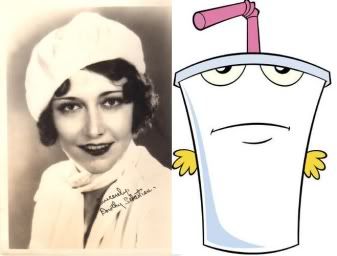Back in October, Hammer of Hate records released a split EP featuring two of Finland's finest--namely, Behexen and Satanic Warmaster. The album features two tracks by each of the bands, and all four are pretty solid offerings. The track that I find most intriguing, however, is Satanic Warmaster's second track, an acoustic version of his song "The Burning Eyes of the Werewolf" (which originally appeared on his debut album, 2001's Strength and Honour). As a pseudo-scholar of the Black Metal genre, I have to say that even though I haven't heard the original version (which is in all likelihood horribly under-produced), I greatly appreciate this acoustic rendition; I feel as though it supports my long-standing logic for liking Black Metal.
Even though I am as strong an advocate of the genre as you are likely to meet, I will readily admit that the Black Metal milieu---if we may call it such--is not without its fair share of foibles (and perhaps even more than that). Among these may be counted the oft-cited poor production values of the majority of Black Metal albums, the abrasive nature of the distorted guitars and the rapid-fire, merciless drumming, the often-times abhorrent ideologies espoused by many figures within the genre (which can range from petulant satanism to militant racism) and the sometimes laughable get-ups which those same figures flaunt.
Yet in spite of all this, I have long maintained that if one is willing to put aside all the peripheral baggage that comes along with the Black Metal label and is willing to simply listen to the notes that are being paid, one will find out that Black Metal is more than just sound and fury. At its most basic level, a Black Metal composition is made or broken by its melody and the ability of that melody to communicate the desired mood (which, contrary to popular belief, is not always raw, unfocused anger).
Although the title of the song might suggest a B-grade Italian horror flick from the 1960s, the acoustic rendition of "Burning Eyes of the Werewolf" nevertheless allows the uninitiated listener to get a feel for the subtleties of Black Metal songwriting. The melody--the most crucial aspect of the song as a whole--suggests several different moods. The melancholy and despair in the intro is apparent, but as the song picks up those give way to something more akin to solemn pride. Is it a masterpiece of songwriting? Hardly. But Satanic Warmaster's brief sojourn into acoustic territory nonetheless merits some interest by virtue of the fact that it allows us a glimpse of the softer side of Black Metal (or, at least, what we may understand to be the closest possible approximation to such a thing).
29 November 2008
17 November 2008
Free Associations, Ep. 6: Our Blushing Aqua Teens
Last night I watched Our Blushing Brides--one of those flicks which, for reasons that shouldn't be too hard to figure out, holds a special place in what passes for my heart--for the second time. In case you aren't familiar with the film, Our Blushing Brides is a proto-chick-flick from 1930 centering around the romantic misadventures of three shop girls living together in a cramped New York flat as they try to eke out a living in the early years of the Great Depression. Our heroines are played by the Holy Trinity of Joan Crawford, Dorothy Sebastian and Anita Page.
Beneath all the coats of MGM varnish and gold plating, Our Blushing Brides is, at heart, a cautionary morality tale for the working girls of the era. Connie Blair (Anita Page) and Francine "Frankie" Daniels (Dorothy Sebastian) are fed up with the inglorious drudgery of working for meager wages in a department store, and allow themselves to be swept up away by wealthy heirs, only to wind up broken-hearted (or worse). Meanwhile, Geraldine "Gerry" March (Joan Crawford) keeps to the straight and narrow, good little trooper that she is. I rather enjoy this decidedly blue-collar subtext; it's rather the antithesis of the "princess" ideal that Disney movies and other cultural forces like to ram down the throat of our nation's impressionable youth.
...But I digress.
Prior to watching Our Blushing Brides, I watched a few episodes of the popular animated series Aqua Teen Hunger Force. On the surface, these are two entirely different things that have nothing to do with one another--the proverbial apples and oranges. Yet there certainly is some common ground between the two. I had my suspicions after watching Our Blushing Brides the first time around, and after a side-by-side comparison, it now seems to me that the character dynamic among Gerry, Connie and Frankie is eerily similar to the dynamic among Frylock, Meatwad and Master Shake.

To begin with, Gerry March and Frylock are the moral and responsible corners of their respective triangles. Seemingly motivated by an almost parental affection, they try to point their friends in the right direction, but more often than not their noble efforts meet with failure, with the result that they must bail their friends out of difficult situations. Gerry never shoots lazer beams or thunder bolts from her eyes as Frylock often does, although I suspect that she does possess the ability.

Connie Blair and Meatwad, meanwhile, are the dopey, short-sighted but still essentially good ones. Their gullibility lands them in hot water, particularly in conjunction with their occasional spurts of ambition. Yet once again the point of divergence is the matter of superpowers--that Meatwad is (fittingly) an amorphous wad of meat allows him to take different shapes (most commonly a hot dog or an igloo). As she is unable to metamorphose herself in such a fashion, poor Connie's modus vivendi lies in her less-than-stellar perfume selling skills.

Finally, there comes the matter of Frankie Daniels and Master Shake. Prodigal and avaricious, shiftless and crafty, these two tend to resort to underhanded means and elaborate schemes to get ahead in the world, typically with tragic (or hilarious) results. Yet in spite of all this, one gets the impression that they are still basically good somewhere deep down inside. Neither has any particularly useful super powers, barring their penchant for snarkiness. Frankie is also significantly less malicious toward Connie than Shake is toward Meatwad--as I recall, she never puts Connie (or her cat) in the microwave.
I still don't know who would be the OBB equivalent of Carl, though. Maybe Robert Montgomery.
Beneath all the coats of MGM varnish and gold plating, Our Blushing Brides is, at heart, a cautionary morality tale for the working girls of the era. Connie Blair (Anita Page) and Francine "Frankie" Daniels (Dorothy Sebastian) are fed up with the inglorious drudgery of working for meager wages in a department store, and allow themselves to be swept up away by wealthy heirs, only to wind up broken-hearted (or worse). Meanwhile, Geraldine "Gerry" March (Joan Crawford) keeps to the straight and narrow, good little trooper that she is. I rather enjoy this decidedly blue-collar subtext; it's rather the antithesis of the "princess" ideal that Disney movies and other cultural forces like to ram down the throat of our nation's impressionable youth.
...But I digress.
Prior to watching Our Blushing Brides, I watched a few episodes of the popular animated series Aqua Teen Hunger Force. On the surface, these are two entirely different things that have nothing to do with one another--the proverbial apples and oranges. Yet there certainly is some common ground between the two. I had my suspicions after watching Our Blushing Brides the first time around, and after a side-by-side comparison, it now seems to me that the character dynamic among Gerry, Connie and Frankie is eerily similar to the dynamic among Frylock, Meatwad and Master Shake.



I still don't know who would be the OBB equivalent of Carl, though. Maybe Robert Montgomery.
14 November 2008
Happy Brooksday
 For all of you who know (and those of you who don't), today is (or at least would have been) the 102nd birthday of the legendary Louise Brooks, whose haircut is said to have launched a thousand ships. Let's all pour one out for our dead homie. Happy birthday, Lulu; here's a birthday song for you.
For all of you who know (and those of you who don't), today is (or at least would have been) the 102nd birthday of the legendary Louise Brooks, whose haircut is said to have launched a thousand ships. Let's all pour one out for our dead homie. Happy birthday, Lulu; here's a birthday song for you.
13 November 2008
The Art of Grimness, Ep. 9
 His dubious right-of-right-wing politics notwithstanding, Robert Fudali (alias Rob Darken) is nevertheless a pretty snazzy dresser. Truth be told, he's also a pretty good musician. Hailing from Wrocław, Poland, Rob Darken is the driving force behind the well-known Black Metal band Graveland.
His dubious right-of-right-wing politics notwithstanding, Robert Fudali (alias Rob Darken) is nevertheless a pretty snazzy dresser. Truth be told, he's also a pretty good musician. Hailing from Wrocław, Poland, Rob Darken is the driving force behind the well-known Black Metal band Graveland.Though Graveland took many cues from predecessors such as Bathory and Burzum (and who among early Black Metal bands didn't?), Rob Darken injected a certain idiomatic and epic style into his music. Whereas the majority of Scandinavian Black Metal bands concerned themselves with garden-variety Satanism, Graveland set aside the corpse paint and explored the unfamiliar territory of Slavonic Paganism instead (although with the prerequisite anti-Christian hoopla largely intact). Rob Darken's secondary project, Lord Wind, takes that theme one step further and plays a brand of Medieval folkish music.
Along with Kaldrad of Branikald over in Russia, Rob Darken of Graveland has inspired legions of Slavonic Pagan Black Metal acts across Eastern Europe, both ideologically and musically. Among their followers may be counted such notable projects as Kroda, Temnozor, Nokturnal Mortum and Drudkh.
10 November 2008
Bringing Sexy Back
Because contemporary fashions are excessively boring, slutty or some combination of both, here's a glimpse of some respectable sexiness from 1927. In color, no less! Laura La Plante wins the "Hat of the Year" award.
08 November 2008
The Return...
Some of you might have noticed my conspicuous absence from the inter-blogo-net-sphere the past week or so. More of you, I bet, didn't. Either way, the reason was pretty simple--my motherboard decided it had had enough of life, and died. Two weeks and two hundred and fifty dollars later, I have returned to tell the tale. I don't really remember how I managed to pass the time--it's mostly a haze of bad zombie movies, football and telephone arguments (and that whole presidential election thing). Anyhow, everything is settled, and I am ready to resume filling your spare time with my obsessive nonsense.
Filed Under:
my life (or what passes for it),
technology sucks
Subscribe to:
Posts (Atom)